If you are searching for what type of concrete anchor bolt is the right fit for your job, you came to the right place. There are many types of anchor bolts that function differently and are designed for a wide variety of applications. Continue reading to learn about the different types of anchor bolts, common applications they are used for, and the factors to consider when choosing the correct bolt.
For more information, please visit Trico.
What is an Anchor Bolt?
Anchor bolts are mechanical fasteners that attach and secure objects to concrete surfaces. One end of the anchor bolt is installed into the concrete and the other end is visible above the concrete. The end that is exposed is typically threaded for attaching equipment.
Anchor Bolt Uses
Anchor bolts are designed to make your life easier by securing structures in place. This includes structural and nonstructural equipment. These versatile bolts are used in many industries. Some of the common industries and applications include:
- Repairing a wide range of equipment, support establishments, and structural parts for the chemical, petrochemical, and oil and gas industries.
- Power and steel industry
- Construction industry
- Rail lines and airplane industry
- Pharmaceutical and food processing plants
- Nuclear industry
Types of Anchor Bolts
Anchor bolts are categorized into two types:
-
Cast-in-place anchor bolts are cast directly into wet concrete, often called 'wet-set' anchor bolts. Once the concrete cures and hardens, the bolt becomes fully secured. This is the simplest yet strongest type of anchor bolt you can use. Common versions of cast-in place anchor bolts include L bolts and J bolts.
-
Drop-in anchor bolts are installed into the concrete after the concrete has been poured and hardened, and commonly referred to as 'dry-set' or 'post-installed' anchor bolts. In order to install a post-installed anchor bolt, a pilot hole must be drilled into the concrete to the correct depth, after which the bolt may be screwed in. Common versions of drop-in anchors include wedge anchors and sleeve anchors.
1. Wedge Anchor Bolts
Wedge Anchor bolts are very common anchor bolts due to several factors. They are corrosion-resistant, easy to install, and are one of the strongest concrete anchors available. Wedge anchors are named after the wedges that open and expand at their base when it is tightened.
Male wedge anchors consist of two pieces. One piece is threaded at the top end while the other end consists of a mechanism that includes a clip and wedges. The clip and wedges expand between the stud and the walls of the concrete. Wedge anchors are a great choice when it comes to heavy load or heavy shear applications. Fasteners Plus offers zinc, galvanized, and stainless steel wedge anchors.
2. Drop-in Anchor Bolts
Drop-in anchor bolts feature a pretty simple design. This type of bolt is a female anchor that is placed in a pre-drilled hole in the concrete. The expander plug at the base of the anchor is set by using a setting tool. The setting tool is a steel rod with one end necked down. The necked-down portion of the tool is inserted into the drop-in anchor. It is designed to be tapped with a hammer until the lip of the anchor meets the lip of the setting tool.
This type of anchor is excellent for use with threaded rods to install electrical cable trays, HVAC ductwork, and pipes and heads for fire sprinklers.
3. L Bolts and J Bolts
Bent-bar anchor bolts are steel rods or bars that are bent into an L or J shape. L bolts and J bolts have threads on one end and the other end is bent or bowed. The end that is bent is inserted into the concrete during installation.
These heavy-duty foundation bolts are commonly used for applications including signposts, shafts, heavy hardware, tooling, and additional steel structures. L bolts and J bolts are intended to be used with compatible nuts and washers.
4. Sleeve Anchor Bolts
Concrete sleeve anchor bolts are threaded bolts enveloped by an expander sleeve at the top end. The other end of the bolt has a nut and washer. This type of male anchor bolt is threaded through the fixture and into a pre-drilled hole in the concrete. When you turn the nut on the bolt, the bolt is pulled through the sleeve.
Simpson Strong-Tie Sleeve All Anchors are available in a wide variety of lengths, diameters, and head style configurations so you can be sure to find the right option for your specific application.
5. Strike Anchor Bolts
Strike anchor bolts, also known as hammer drive anchors or hammer drive pin anchors are commonly used to attach lightweight fixtures to solid concrete. This may include shelf brackets, conduits, and electrical boxes. This male anchor bolt is an impact expansion fastener that consists of a tubular body with a drive pin that extends from the tubular casing.
Once you insert the anchor bolt into the pre-drilled hole in the concrete, the head of the pin is driven further into the tube by striking it with a hammer. This expands the tube and creates a strong hold in the concrete. Strike anchor bolts are generally not removable after they have been installed into the concrete.
6. Split Drive Anchor Bolts
Split drive concrete anchors are male anchors that have an expanded base that is split. The split base is compressed as the bolt is hammered into the concrete. It maintains outward pressure on the walls of the hole, which gives it holding power. Split drive anchors are skillfully designed for light-duty anchoring to concrete, brick, or block.
7. Lag Shield Anchors
Lag shield anchors are female anchors that are threaded on the inside and feature a ribbed, slightly tapered sleeve. For installation, simply insert the lag shield into the correct-sized pre-drilled hole in the concrete.
Next, you will insert a lag screw into the lag shield and screw it in. As you twist the lag screw in, it expands the sleeve and cuts its own thread. The outer thread of the shield expands against the concrete. Lag shields are excellent for applications where vibration may affect the connection.
Which Anchor Bolt is Right for You?
Additionally, when selecting any fastener for a job, there are many factors to consider. When you install a bolt into concrete, the goal is that the fastener will last a lifetime. To make sure that goal can be achieved, it is important to choose the option that is right for you. Factors to consider include:
- The anchor bolt hole size - as the diameter of the hole increases, so does the load capacity.
- Anchor bolt length - the deeper the bolt is installed into the concrete, the higher the load-bearing power is.
- The base material of the object.
- The environment of the application - invest in a corrosion-resist option if there is a risk of corrosion occurring.
- The amount of weight the anchor can endure.
- Type of load - the holding capacity of an anchor bolt reduces with vibrating and shocking loads.
- The material strength of the anchor bolt.
- The type of concrete.
- The size and position of the fittings.
- Anchor spacing requirements.
Anchor bolts are an essential component in construction, used to attach structural elements to masonry or concrete. There are several types and sizes of anchor bolts, each with its own application based on the project's size and scope. The four most common types of anchor bolts include L-shaped anchor bolts, double-end rods with plate anchor bolts, headed anchor bolts, and swedge anchor bolts.
Key Takeaways:
- L-shaped anchor bolts are frequently used in structural, masonry, and concrete applications.
- Double-end rods with plate anchor bolts are often used to anchor structures to their foundations.
- Headed anchor bolts have a non-threaded end with a square head and are used for permanent installations.
- Swedge anchor bolts are considered the strongest variety and consist of round bars of steel with indentations on one end to increase pull-out resistance.
- Proper selection of anchor bolts is crucial for secure and reliable concrete anchoring.
L-Shaped Anchor Bolts
L-shaped anchor bolts, also known as masonry anchors or foundation bolts, are versatile and widely used in construction. These anchor bolts come in various sizes, shapes, and materials, ensuring compatibility with different types of projects. The design of L-shaped anchor bolts features a threaded end that provides maximum load-bearing capacity, making them suitable for securing heavy structural elements.
When installing L-shaped anchor bolts, they are typically attached using a hex nut and flat washer. This combination ensures a secure connection and enhances the overall stability of the structure. The threaded end allows for adequate tensioning, providing the necessary support for load-bearing walls and other structural elements.
These anchor bolts are commonly embedded in walls to support steel plates and beams in both load-bearing and non-load-bearing walls. They play a crucial role in balancing signage and structures on masonry or concrete surfaces. L-shaped anchor bolts provide the necessary stability and reinforcement to ensure structural integrity.
Applications of L-Shaped Anchor Bolts
'L-shaped anchor bolts are extensively used in various construction applications, some of which include:'
- Supporting structural elements in buildings
- Securing load-bearing walls
- Embedding in walls to support steel plates and beams
- Balancing signage and structures on masonry or concrete
Advantages of L-Shaped Anchor Bolts
'The use of L-shaped anchor bolts offers several advantages, such as:'
- High load-bearing capacity
- Secure attachment with hex nut and flat washer
- Enhanced stability and structural integrity
- Versatile application in various construction projects
L-Shaped Anchor Bolts Comparison
Material
Size
Application
Steel
1/2' x 6'
Supporting load-bearing walls
Stainless Steel
5/8' x 8'
Embedding in walls for structural reinforcement
Galvanized
3/4' x 10'
Balancing signage and structures on masonry or concrete
Double-End Rods With Plate Anchor Bolts
Double-end rods with plate anchor bolts, also known as anchor rods or threaded studs, are versatile fasteners commonly used in various construction projects. These anchor bolts feature a plate washer on one end, offering enhanced stability and load-bearing capacity. The plate washer can be either welded to the anchor bolt or tack-welded to a nut inside the concrete.
Double-end rods with plate anchor bolts play a crucial role in anchoring structures to their foundations. Their robust design and secure attachment provide the necessary support to ensure the stability and integrity of structures such as traffic signal poles, large buildings, and columns for construction projects.
These anchor bolts are the backbone of countless construction projects, ensuring the safety and durability of vital structures. From stabilizing large buildings to supporting traffic signal poles, double-end rods with plate anchor bolts are a reliable choice for any project that demands strong and secure anchoring.
There are various applications for double-end rods with plate anchor bolts, including:
- Stabilizing large buildings and structures
- Anchoring traffic signal poles for safe deployment
- Securing columns for construction projects
- Providing stability to critical infrastructure
The versatility of double-end rods with plate anchor bolts makes them an indispensable component of modern construction. Their strength and reliability ensure the longevity and structural integrity of the anchored elements.
Applications
Advantages
Stabilizing large buildings and structures
Provides strength and stability
Anchoring traffic signal poles for safe deployment
Ensures secure attachment
Securing columns for construction projects
Enhances structural integrity
Providing stability to critical infrastructure
Withstands heavy loads and external forces
Headed Anchor Bolts
Headed anchor bolts are an integral part of secure and reliable construction. With their unique design featuring a non-threaded end and a square head, these anchor bolts are specifically engineered to secure various structures in place. The non-threaded end allows for a solid and stable connection, ensuring the durability and stability of the anchored structures.
Headed anchor bolts are commonly utilized in a range of applications, including:
- Securing structural steel columns
- Attaching bridge rails
- Affixing light poles
These bolts are designed for permanent installations, as the square head prevents rotation and provides additional resistance against external forces. The headed anchor bolts play a critical role in providing the necessary support and stability to structures, ensuring the safety of individuals, and preserving the integrity of the construction.
Image:
Application
Key Features
Securing Structural
Steel Columns
Headed anchor bolts offer a secure connection between
steel columns and concrete foundations, providing structural stability.
Attaching
Bridge Rails
Headed anchor bolts ensure the proper alignment and attachment of
bridge rails to the concrete surfaces, enhancing safety and stability.
Affixing
Light Poles
Headed anchor bolts secure
light poles in place, preventing movement or displacement due to wind or other external forces.
Swedge Anchor Bolts
Swedge anchor bolts are a robust type of anchor bolt consisting of round bars of steel. These anchor bolts possess a threaded end for secure fastening and multiple indentations on the opposite end, known as the swedge. The swedge design allows the concrete to settle within the grooves, significantly enhancing pull-out resistance. Due to their exceptional strength and reliability, swedge anchor bolts are widely utilized in various construction projects, particularly those involving piers and girders, as well as highway work and Department of Transport projects.
If you are looking for more details, kindly visit l bolts for concrete.
Additional resources:How to Choose the Right Types of Tool Holders in LatheThe Advantages of Utilizing Various Types of Clamps in WoodworkingUnderstanding the Benefits and Features of Cylindrical Lever LocksUnveiling the Many Applications and Benefits of Webbing Slings in Various IndustriesHow to Choose a Machine Vise?What are Tapered Roller Thrust Bearings?Importance and Applications of Bearing Plate
When it comes to anchoring critical infrastructure such as piers and girders, swedge anchor bolts are the go-to choice. Their solid round bars of steel ensure superior durability, while the swedge design maximizes pull-out resistance, making them ideal for high-stress applications. Whether it's highway bridges or Department of Transport projects, the strength and stability provided by swedge anchor bolts play a pivotal role in ensuring the integrity of the structures.
In addition to their pull-out resistance capabilities, swedge anchor bolts are also known for their ease of installation. By using the threaded end, these anchor bolts can be securely fastened into the concrete, providing a reliable connection to the structure. This ensures that the piers and girders remain stable and can withstand the heavy loads typically encountered in highway work and Department of Transport projects.
When considering the overall safety and structural integrity of infrastructure projects, it is essential to choose anchor bolts that can withstand the demands of the job. Swedge anchor bolts offer the perfect combination of strength, durability, and pull-out resistance, making them a reliable choice for applications requiring secure anchoring. Their use in piers, girders, highway work, and Department of Transport projects ensures the long-term stability and functionality of these crucial structures.
Choosing the Right Anchor Bolt for Your Build
When undertaking a construction project, selecting the appropriate anchor bolt is crucial for ensuring the strength and stability of your structure. Consider the following factors to make an informed decision:
Fastener Length
Choose an anchor bolt with the right length to provide sufficient penetration into the base material, allowing for optimal engagement and load-bearing capacity.
Hole Size
The size of the drilled hole must be appropriate to accommodate the anchor bolt, ensuring a secure fit and preventing any potential loosening or damage to the concrete.
Concrete Thickness
Take into account the thickness of the concrete to determine the appropriate length and strength of the anchor bolt required for a secure fastening.
Weight of Fastening
If you are attaching heavy items, such as machinery or equipment, choose an anchor bolt capable of withstanding the weight and providing the necessary structural support.
Structural Integrity
Consider the specific requirements of your project and identify any structural vulnerabilities that may necessitate the use of specialized anchor bolts or reinforcement techniques.
Concrete PSI
Know the compressive strength of the concrete you are working with, as anchor bolt selection is influenced by the PSI (pound-force per square inch) rating.
Anchor Bolt Positioning
Proper positioning of anchor bolts is essential for maintaining stability and evenly distributing the load across the structure. Ensure accurate placement to avoid compromising structural integrity.
Professional Assistance
If you are unsure about any aspect of anchor bolt selection or installation, seek the advice of a professional engineer or contractor with experience in concrete anchoring. Their expertise will help you make the right choices for your project.
'Choosing the right anchor bolt is a critical aspect of construction. It ensures the reliable attachment of structural elements, preventing costly damage and ensuring the safety of the building and its occupants.' ' [Insert Name], Professional Engineer
By carefully considering factors such as fastener length, hole size, concrete thickness, weight of fastening, structural integrity, concrete PSI, anchor bolt positioning, and seeking professional assistance when needed, you can make an informed decision to select the appropriate anchor bolt for your specific construction requirements.
The Importance of Concrete Anchors
Concrete anchors play a crucial role in fastening structural items to reinforced concrete or masonry. They are often overlooked but are an essential design component in construction projects. By securely anchoring structural elements, concrete anchors ensure stability, safety, and long-term durability.
When it comes to fastening structural items, such as beams, columns, walls, or equipment, to a concrete or masonry substrate, relying solely on the weight or friction between the components is not sufficient. Concrete anchors provide the necessary connection, preventing movement, displacement, or potential collapse.
One key consideration in the design and selection of concrete anchors is the specific project requirements. Factors such as the load-bearing capacity, type of structural elements, environmental conditions, and even aesthetic considerations must be taken into account.
Design considerations for concrete anchors are outlined in industry standards such as the American Concrete Institute (ACI) 318 Appendix D. This appendix provides guidance on the strength design method for anchorage to concrete, which incorporates factors like concrete strength, depth of embedment, edge distance, and concrete thickness.
Following ACI 318 Appendix D and other relevant design codes and regulations ensures the structural integrity and reliability of the anchoring system. Engineers and designers must carefully evaluate the project parameters, conduct proper calculations, and choose suitable anchor types and sizes to meet the specific requirements of the application.
Selecting the Right Anchor Type
When choosing concrete anchors, it's essential to consider various design factors, including but not limited to:
- The type and weight of the structure or equipment being anchored;
- The load capacity required;
- The concrete's compressive strength and thickness;
- The layout and spacing of the anchors;
- The potential for dynamic or seismic loads;
- The presence of any corrosive or aggressive substances.
By carefully evaluating these factors and following industry standards, designers can select the most appropriate anchor type, whether it's a mechanical or adhesive anchor, and ensure its compatibility with the specific project requirements.
Importance of Strength Design Method
The strength design method, as outlined in ACI 318 Appendix D, is crucial for determining the appropriate anchor size, quantity, and embedment depth. This method takes into account the concrete's strength, load type, and other design considerations, ensuring the anchors can resist the applied forces and maintain the structural stability of the system.
'The strength design method provides engineers and designers with the necessary tools to calculate the required anchor capacities in relation to the loads and concrete conditions. By following this method, they can achieve a safe and efficient anchoring solution that meets the industry standards and ensures the structural integrity.'
Proper design considerations and adherence to industry regulations are essential for the successful use of concrete anchors in construction projects. By selecting the right anchor type, following design codes like ACI 318 Appendix D, and conducting thorough calculations, engineers and designers can achieve a secure and reliable anchoring system, providing long-term performance and peace of mind.
Types of Concrete Anchors
When it comes to concrete anchoring, there are two main types of anchors: post-installed and cast-in anchors. Each type has its own unique characteristics and applications, offering different methods of installation and performance.
Post-Installed Anchors
Post-installed anchors are installed after the concrete has set and dried. They are versatile and can be either mechanical or adhesive, providing flexibility in their use. Mechanical post-installed anchors are inserted into pre-drilled holes and expand once inside the concrete, offering excellent stability and load-bearing capacity. Adhesive post-installed anchors, on the other hand, are bonded to the concrete surface using adhesive products, ensuring a strong and durable connection.
Cast-In Anchors
Cast-in anchors are placed in the concrete before it sets and dries. These anchors are designed to be embedded into the concrete structure, providing a secure and permanent attachment point. Cast-in anchors are often used for applications that require precise positioning and alignment, such as fixing steel plates or beams in load-bearing walls.
Both post-installed and cast-in anchors have their advantages and are suitable for different construction scenarios. The choice between the two depends on factors such as the desired level of flexibility, the nature of the load to be supported, and the specific requirements of the project.
Anchor Type
Main Features
Applications
Mechanical Post-Installed Anchors
Expands inside concrete for high load-bearing capacity
Excellent stability and resistance
Structural applications
Machinery installations
Heavy-duty fastenings
Adhesive Post-Installed Anchors
Bonded to the concrete surface using adhesive products
Provides a strong and durable connection
Fixing light fixtures
Securing handrails and guardrails
Attaching signage
Cast-In Anchors
Embedded into the concrete structure
Secure and permanent attachment
Steel plate and beam fixing
Column reinforcement
Concrete wall connections
Understanding the different types of concrete anchors and their applications is crucial for successful construction projects. Whether you need the versatility of post-installed anchors or the precision of cast-in anchors, choosing the right type will ensure a strong and reliable connection that meets your project's requirements.
Conclusion
Proper selection of anchor bolts is crucial for secure and reliable concrete anchoring. The different types of bolts for concrete, such as L-shaped anchor bolts, double-end rods with plate anchor bolts, headed anchor bolts, and swedge anchor bolts, provide options for various applications. By understanding the specific requirements of a project, informed decision-making can be made regarding anchor bolt selection.
Factors to consider when choosing anchor bolts include fastener length, hole size, concrete thickness, and the weight of the fastening. Structural integrity and adherence to industry standards, such as the American Concrete Institute (ACI) guidelines, ensure the overall strength and stability of the anchoring system. With proper anchor bolt positioning and the assistance of professionals when needed, a secure and durable concrete anchoring solution can be achieved.
Concrete anchors play a vital role in fastening structural items to reinforced concrete or masonry. Their importance should not be underestimated, as they provide stability and prevent the movement of structures. By utilizing the appropriate anchor bolt for each specific application, the risk of accidents, structural failure, and overall project delays can be minimized. Whether it's securing steel columns, attaching bridge rails, or stabilizing highway work, the right anchor bolt ensures a reliable and long-lasting anchoring solution for any construction project.
FAQ
What are the different types of anchor bolts for concrete?
The different types of anchor bolts for concrete include L-shaped anchor bolts, double-end rods with plate anchor bolts, headed anchor bolts, and swedge anchor bolts.
What are L-shaped anchor bolts used for?
L-shaped anchor bolts, also known as masonry anchors or foundation bolts, are commonly used to support structural elements in buildings, balance signage and structures on masonry or concrete, and embed in walls to support steel plates and beams.
How are double-end rods with plate anchor bolts used?
Double-end rods with plate anchor bolts are often used to anchor structures to their foundations, such as traffic signal poles, large buildings, and columns for buildings.
What are headed anchor bolts used for?
Headed anchor bolts, with a non-threaded end and a square head, are commonly used to secure structural steel columns, attach bridge rails, and affix light poles. They are ideal for permanent installations.
What are swedge anchor bolts?
Swedge anchor bolts are considered the strongest variety and consist of round bars of steel with indentations on one end. They are commonly used to connect piers and girders, stabilize highway work, and augment Department of Transport projects.
What factors should I consider when choosing an anchor bolt for my project?
Factors to consider when choosing an anchor bolt include fastener length, hole size, concrete thickness, weight of the fastening, structural integrity, concrete PSI, anchor bolt positioning, and seeking professional assistance when needed.
Why are concrete anchors important?
Concrete anchors play a crucial role in fastening structural items to reinforced concrete or masonry. They are an essential design component and their importance should not be underestimated.
What are the types of concrete anchors?
The two types of concrete anchors are post-installed anchors and cast-in anchors. Post-installed anchors are installed after the concrete has set and dried, while cast-in anchors are placed in the concrete before it sets and dries.
How can I ensure the right anchor bolt is chosen for my project?
Proper selection of anchor bolts is crucial for secure and reliable concrete anchoring. Understanding the different types of bolts, and considering factors such as fastener length, hole size, concrete thickness, and structural integrity, will help ensure the right anchor bolt is chosen for the project.
For more information, please visit head pin.
Source Links




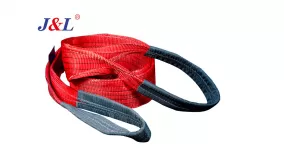
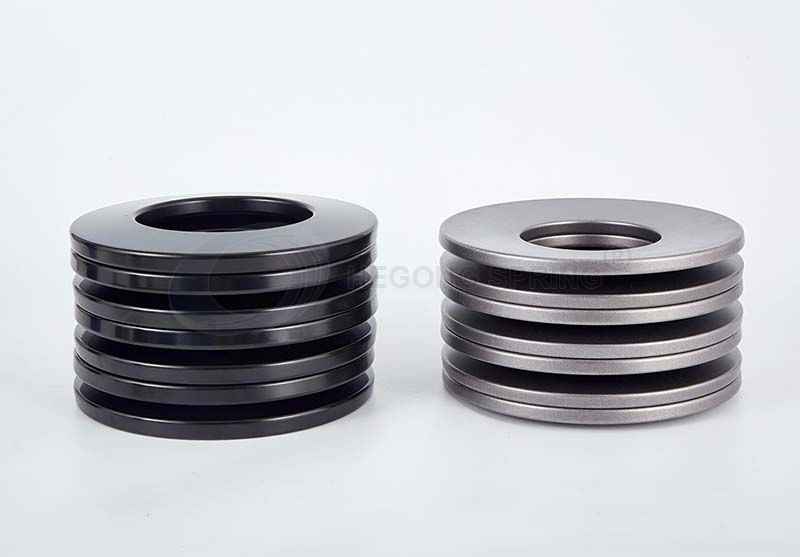
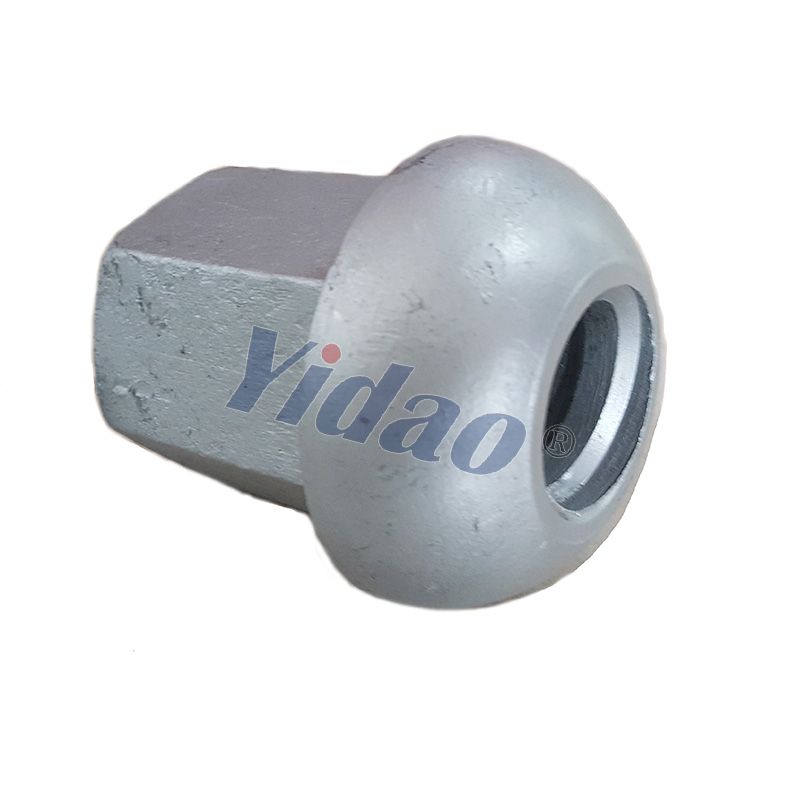
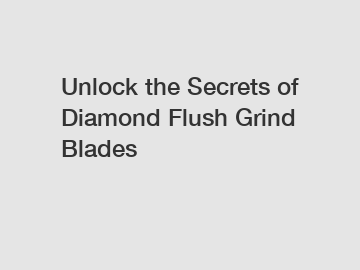
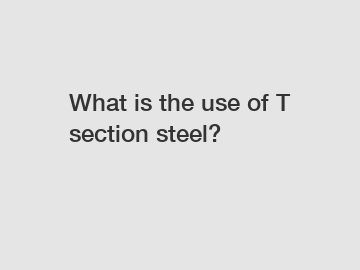
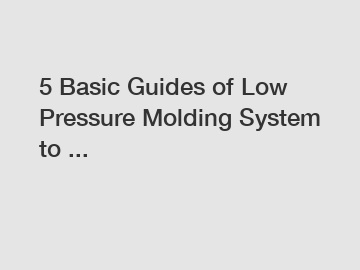
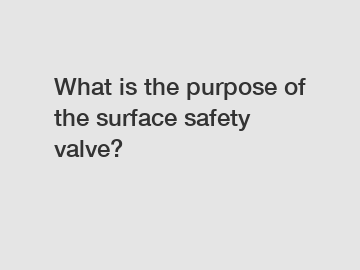

Comments
All Comments ( 0 )